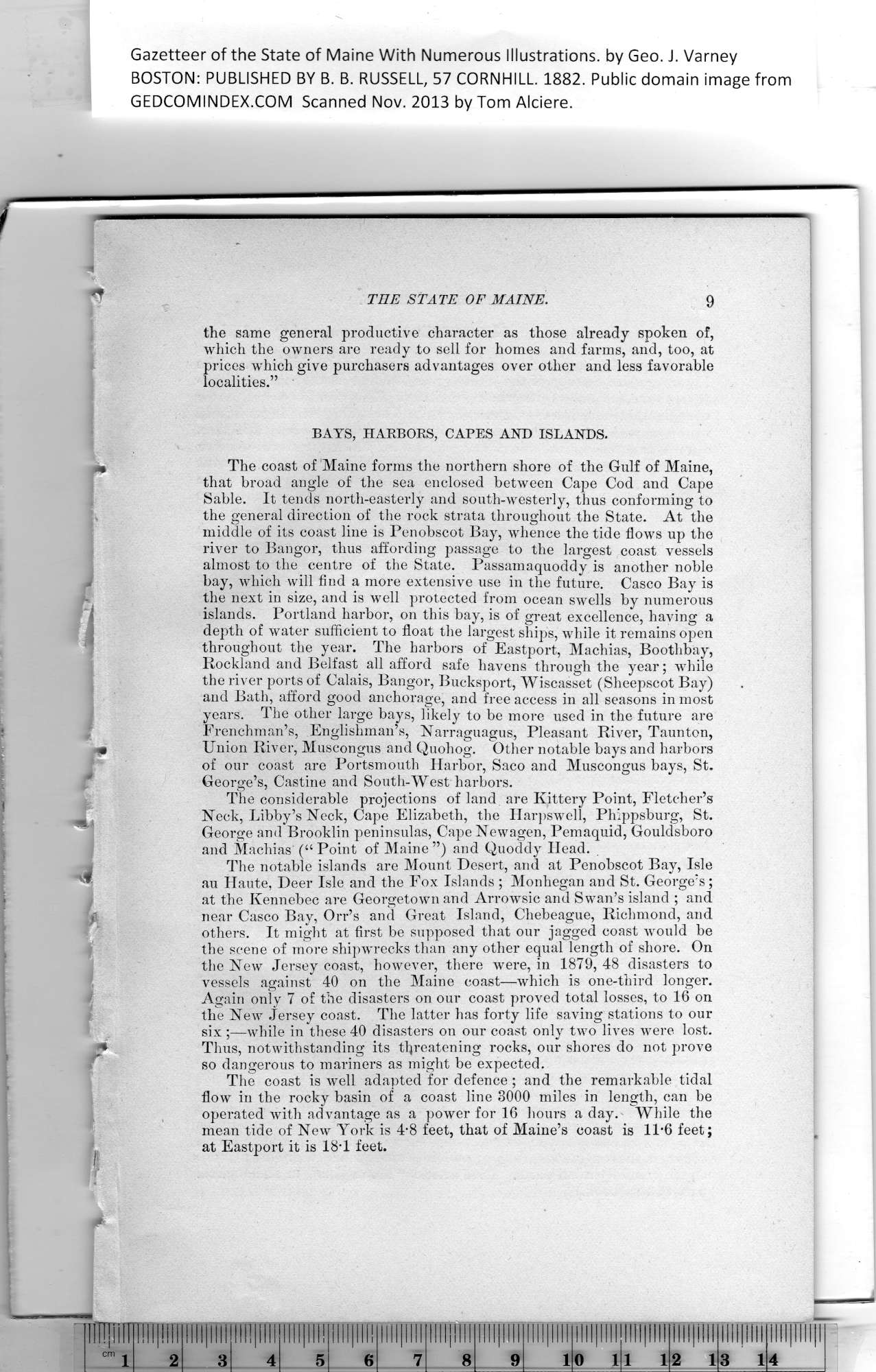Click on the image to view a larger, bitmap (.bmp) image suitable for printing. HOME PAGE ... REFERENCE PAGE ... THIS GAZETTEER’S PAGE |

Click on the image above for a larger, bitmap image suitable for printing.
|
Gazetteer of the State of Maine With Numerous Illustrations, by Geo. J. Varney BOSTON: PUBLISHED BY B. B. RUSSELL, 57 CORNHILL. 1882. Public domain image from THE STATE OF MAINE. the same general productive character as those already spoken of, BAYS, HARBORS, CAPES AND ISLANDS. * The coast of Maine forms the northern shore of the Gulf of Maine, that broad angle of the sea enclosed between Cape Cod and Cape ; of our coast are Portsmouth Harbor, Saco and Muscongus bays, St. George’s, Castine and South-West harbors. The considerable projections of land are Kittery Point, Fletcher’s and Machias (“ Point of Maine ”) and Quoddy Head. . au Haute, Deer Isle and the Fox Islands ; Monhegan and St. George’s; others. It might at first be supposed that our jagged coast would he the New Jersey coast, however, there were, in 1879, 48 disasters to ( vessels against 40 on the Maine coast—which is one-third longer. (, Again only 7 of the disasters on our coast proved total losses, to 16 on f the New jersey coast. The latter has forty life saving stations to our six ;—while in these 40 disasters on our coast only two lives were lost. ^ Thus, notwithstanding its threatening rocks, our shores do not prove I so dangerous to mariners as might be expected. The coast is well adapted for defence; and the remarkable tidal f at Eastport it is 18-1 feet. PREVIOUS PAGE ... NEXT PAGE This page was written in HTML using a program written in Python 3.2 |